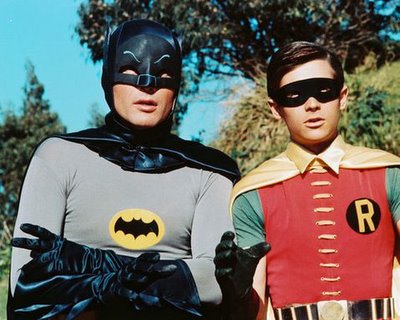
Lordy, lordy -- BATMAN's forty.
Of course, Bob Kane's creation The Batman is a lot older than that, but it was 40 years ago tonight that ABC-TV premiered the BATMAN series starring Adam West and Burt Ward. That's when Batman officially became Big Bat Business, one of the greatest pop cultural phenomenons of THE Pop Culture Decade.
Holy Batmania!
The world was a lot smaller then -- most television sets could pull in only three or four clear channels and a lot of noise -- and the night of that broadcast is as indelibly etched in my memory as the day John F. Kennedy was shot, or the night The Beatles first appeared on THE ED SULLIVAN SHOW.
Holy Total Recall! ABC had been leading up to the premiere with some atmospheric promos, which focused on Adam West's mouth, so as not to reveal Batman's face -- so to see the costume was a big incentive to tune in. The incentive certainly wasn't the show's choice of villain, The Riddler, one of the more commonplace-looking of the DC comics' nemeses... but Frank Gorshin brought Edward Nigma (a name was never uttered on the show) magnificently to life with a gleeful laugh that was heard all across America the very next day -- on elementary school playgrounds.
Holy Copyright Infringement!There is an aura about that first episode, "Hi Diddle Riddle," that can't be found in any other BATMAN episode; it's not the best episode -- in retrospect, it's easy to see that West and Ward haven't had time to become fully comfortable in character, and there's a lot of post-sync and dubbing work in this first two-parter, not all of it owing to characters in masks or in disguise -- but it plays by somewhat harder rules than the episodes that followed. Robin gets graphically shot in the arm with a dart, Batman enters an "Adults Only" nightclub (where he performs the Batusi later reprised by Uma Thurman and John Travolta in PULP FICTION --
Holy Trivia Question!) and gets "doped," and Jill St. John as Molly (probably the best of the show's many "moll" characters) actually meets her death in the Batcave, her demise unforgettably eulogized by West: "What a way to go-go!"
Forty years ago tonight, within half an hour of the premiere episode of BATMAN ending, I was still buzzing when our doorbell rang. It was my Uncle Imel -- a cranky guy who never did anything for me except complain that my long hair (long compared to his!) made me look like a girl -- and he was bringing me a present...
a Batman sweatshirt! He had been in a department store earlier that day and bought one for his son Greg, who insisted that I get one, too. We were a welfare family -- my mother, half-sister, and I -- and we didn't spend too much time in department stores, so this was the first Batman merchandise I had ever seen. I wore it to school the next day, prouder than I ever was in my clothes until the day I walked to school in my first pair of bell-bottoms. Thanks, Uncle Imel.
Holy Unnecessary Autobiographical Aside!
When more familiar villains showed up on BATMAN in the subsequent weeks, it was a thrill to see how well the roles had been cast -- Burgess Meredith as the Penguin, Cesar Romero as the Joker, George Sanders as Mr. Freeze (a character memorably reprised by Otto Preminger, in a "wildly" different way, in Season 2), David Wayne as the Mad Hatter. But the backbone of the show was its regular supporting cast, especially Alan Napier as Alfred, and particularly Neil Hamilton as Commissioner Gordon. Hamilton, a popular silent screen star, managed to play Gordon seriously, as a pompous windbag, and as Batman's unabashed #1 fan, all at the same time. As an impatient kid who couldn't wait for Commissioner Gordon to reach for the the Bat Phone, I didn't realize how much Hamilton brought to the program until the Bookworm (Roddy McDowall) episode, which opened with Bruce and Dick witnessing the apparent death of Commissioner Gordon, as he was shot and fell from a public suspension bridge.
Holy Porpoise Song!
My personal favorite of the BATMAN episodes? The first season two-parter featuring Malachi Throne as the master of disguise, Falseface. Throne, who never became a household name actor, was billed as "?" for the first 3/4s of the shows,
à la Karloff, his own name appearing only at the end of Part 2... which doubtless provoked an additional "?" in the minds of viewers expecting someone they had actually heard of.
Holy anonymity! (Throne worked a lot in those days as a voice actor in cartoons and commercials; you may remember him as the narrator of LANCELOT LINK - SECRET CHIMP.) The Falseface episodes were something of a dropped experiment for the show, in that they allowed the material to be played somewhat more seriously. Falseface brought the spirit of Fantômas to Gotham City; he was seriously malevolent, and the episode's high speed car chases looked ahead to some of the ideas in Bava's DANGER: DIABOLIK, as when Falseface's escape vehicle actually changed colors as it turned corners.
The great thing about BATMAN, of course, is that kids could appreciate it on one level, and their parents could get a completely different kick out of it. All this grown-up laughter was easy for sensitive children to misinterpret (
Holy condescension!), but it is actually this double-edged appeal that makes the show such a perennial -- much like Warner Bros. cartoons.
I was loyal to BATMAN throughout its three-season run. I turned 12 in the months prior to BATMAN's third and final season, which introduced Yvonne Craig as Barbara Gordon and her alter ego Batgirl, which came as a welcome complement to the onset of puberty. That's why, despite some singularly crappy latter-day villains --
Holy Louie the Lilac! -- BATMAN was still hot as far as I was concerned when TV GUIDE broke the news that the show had been cancelled.
In total, BATMAN lasted for 120 episodes, ending its bat-run on March 24, 1968. I watched its reruns for years to come, and I still enjoy watching them occasionally, though my pleasure is usually tempered by scenes I
remember seeing -- which have been cut to accomodate more commercials. The BATMAN feature film I find especially durable, with the wittiest of all of Lorenzo Semple, Jr.'s writing for the show, not to mention Lee Meriwether's Catwoman -- whom I find the sexiest and most lethal of them all.
And all my days are trances /And all my nightly dreams / Are where thy grey eye glances / And where thy footstep gleams, indeed. (Edgar Allan Poe, Miss Kitka.)
Like many people of my generation, I can't begin to fathom why BATMAN isn't out on DVD, especially to coincide with this anniversary. Whoever owns it must know that the sales would go through the roof, and that the primary audience for the show can only grow smaller with each passing year.
Holy Mortality Rate! Warner Home Video, DC Comics, Greenway Productions -- don't make us wait too much longer, huh?
On this special anniversary, I'd like to send a Bat Signal of special thanks to Adam West and Burt Ward, for the important role they played in my second childhood. That would be the childhood that immediately followed my first (toys, Elvis, monster magazines, The Beatles) and preceded my third (James Bond, Top 40 radio, MAD), fourth (FM radio, PLAYBOY), fifth (CINEFANTASTIQUE, foreign films), sixth (Grove Press fiction), seventh (punk), and so on, right up to this very day.
Holy iconographic timelines!Wouldn't it be wonderful to see something like TV's BATMAN grip the world's imagination once again -- something naive rather than cynical, something cool and creative, something colorful and upbeat, something fun? We need it... and we need it now, old chum.
 "Hello, is this Video WatchBlog? Young man, I just wanted to say... Truer words were never spoken!"
"Hello, is this Video WatchBlog? Young man, I just wanted to say... Truer words were never spoken!"
 ... today is that Flower of Romance, the great John Lydon, a.k.a. Johnny Rotten. You can celebrate his golden jubilee by going to your favorite CD shop and picking up his new 2-disc career overview set, THE BEST OF BRITISH ONE POUND NOTES. It's got almost all the essential tracks from Sex Pistols and Public Image Ltd., as well as the fabulous "Time Zone" recording he made with Afrika Bambaata back in the '80s, which was later used to open Season Three of THE SOPRANOS. (Why not the track he did with The Golden Palaminos? Oh, well.)
... today is that Flower of Romance, the great John Lydon, a.k.a. Johnny Rotten. You can celebrate his golden jubilee by going to your favorite CD shop and picking up his new 2-disc career overview set, THE BEST OF BRITISH ONE POUND NOTES. It's got almost all the essential tracks from Sex Pistols and Public Image Ltd., as well as the fabulous "Time Zone" recording he made with Afrika Bambaata back in the '80s, which was later used to open Season Three of THE SOPRANOS. (Why not the track he did with The Golden Palaminos? Oh, well.)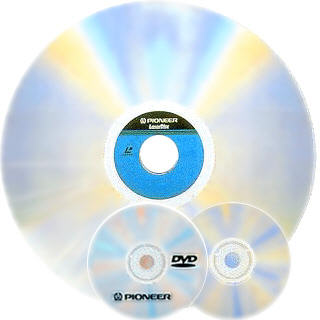






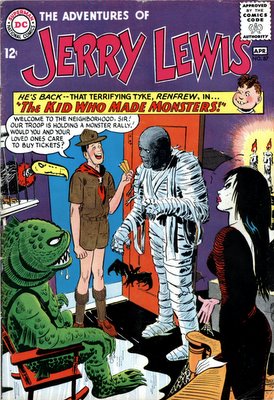




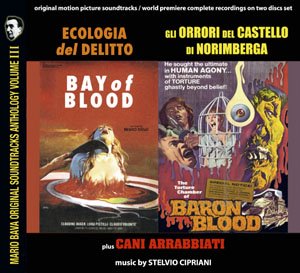
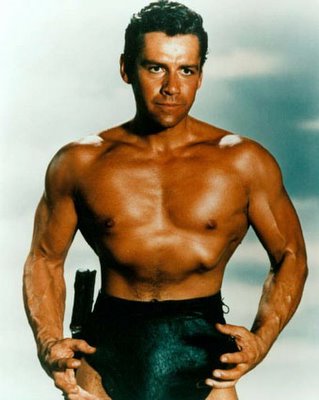
 Scott returned as Maciste in Riccardo Freda's MACISTE ALLA CORTE DEL GRAN KHAN (1961), which became SAMSON AND THE 7 MIRACLES OF THE WORLD when released by American International. (In the French version, Maciste/Samson became Hercules!) I was so impressed by my reacquaintence with this movie that I've watched it three times in the past two days. Freda recognized the opportunity to make this film while directing the action scenes for the epic film MARCO POLO, and made hand-me-down use of its lavish period Asian sets and costumes, as well as the shared duties of enchanting lead actress Yoko Tani, who gives arguably the finest female lead performance in any of the pepla. Though he's best remembered for his work in horror films, Freda was most truly in his element in the realm of historic adventure, and this film allowed him to blend this nobler art with the pulpier, commercial interests of the pepla. Scott is absolutely tremendous here, actually picking up one adversary and swinging him around by the ankles to knock over other comers -- something I've never seen done for real, or so effectively, in any other movie. But his best scene takes place in the arena, where (without the benefit of stunt doubles) he commandeers a chariot with bladed wheels before it can reach a row of prisoners buried up to their necks in the ground, waiting to be decapitated. The film lost a couple of reels in its American release, and I imagine the whole "seven miracles" angle was an invention of the people who dubbed the movie, as the fifth miracle is the first to be mentioned... unless the first four were somehow covered in the reels that the movie forfeited under the banner of AIP. SAMSON AND THE 7 MIRACLES OF THE WORLD is presently available on DVD from Alpha Video and as a DVD-R from other sources like Sinister Cinema, but the movie is ill-served by this 20-minutes-shorter cut and its pan&scanned presentation. (For once, AIP's "Colorscope" fronted a legitimate anamorphic process -- Dyaliscope.)
Scott returned as Maciste in Riccardo Freda's MACISTE ALLA CORTE DEL GRAN KHAN (1961), which became SAMSON AND THE 7 MIRACLES OF THE WORLD when released by American International. (In the French version, Maciste/Samson became Hercules!) I was so impressed by my reacquaintence with this movie that I've watched it three times in the past two days. Freda recognized the opportunity to make this film while directing the action scenes for the epic film MARCO POLO, and made hand-me-down use of its lavish period Asian sets and costumes, as well as the shared duties of enchanting lead actress Yoko Tani, who gives arguably the finest female lead performance in any of the pepla. Though he's best remembered for his work in horror films, Freda was most truly in his element in the realm of historic adventure, and this film allowed him to blend this nobler art with the pulpier, commercial interests of the pepla. Scott is absolutely tremendous here, actually picking up one adversary and swinging him around by the ankles to knock over other comers -- something I've never seen done for real, or so effectively, in any other movie. But his best scene takes place in the arena, where (without the benefit of stunt doubles) he commandeers a chariot with bladed wheels before it can reach a row of prisoners buried up to their necks in the ground, waiting to be decapitated. The film lost a couple of reels in its American release, and I imagine the whole "seven miracles" angle was an invention of the people who dubbed the movie, as the fifth miracle is the first to be mentioned... unless the first four were somehow covered in the reels that the movie forfeited under the banner of AIP. SAMSON AND THE 7 MIRACLES OF THE WORLD is presently available on DVD from Alpha Video and as a DVD-R from other sources like Sinister Cinema, but the movie is ill-served by this 20-minutes-shorter cut and its pan&scanned presentation. (For once, AIP's "Colorscope" fronted a legitimate anamorphic process -- Dyaliscope.)


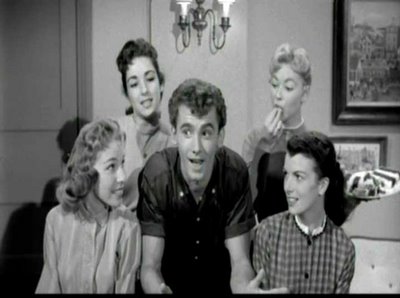
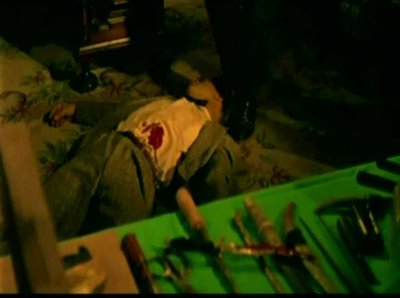




 "Hello, is this Video WatchBlog? Young man, I just wanted to say... Truer words were never spoken!"
"Hello, is this Video WatchBlog? Young man, I just wanted to say... Truer words were never spoken!" 
